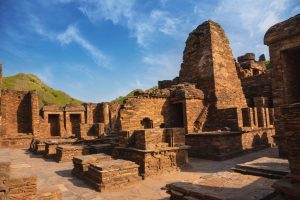
Saidpur Village, a gem lies in Margalla hills
October 26, 2021
Hopper Valley is a scenic portion of the Nagar Valley in Gilgit-Baltistan
October 26, 2021
If you’re planning a trip within Pakistan, don’t miss the opportunity to visit Takht e Bahi, a well renowned Buddhist monastery located in Mardan District of Khyber-Pakhtunkhwa, Pakistan. It is one of the most imposing relics of Buddhism in the Gandhara region of Pakistan. It was a Zoroastrian complex that was then converted into a Buddhist monastery. Locally today the word Takht means top and Bahi means spring. There are two water springs on the top of the site that is why this name has been given to this site.
Archaeologists have divided the history of the complex into four periods, beginning in the 1st century BC. It was founded by Parthian king Gondophares in the early 1st century and was continued until the 2nd century. The period was associated with the Kushan king Kanishka, as well as early Parthian and later Kushana king. Despite any attacks and invasion the hilltop location of the monastery protected it from destruction. The second period took place in the 3rd and 4th centuries including the creation of the stupa court and assembly hall. The third period took place in the 4th and 5th centuries that was associated with the later Kushan dynasty and the Kidara Kushan rulers. The final period took place in the 6th and 7th centuries that included the creation of the Tantric complex.
In 1836, a French Officer made the first modern historical reference to Takht e Bahi whereas the explorations and excavations on Takt e Bahi began in 1864. British Museum holds some significant number of objects from the site. The site was restored in the 1920s. The complex today comprises four main areas, including the main court of stupas where a cluster of stupas are located, monastic chambers where the monks meditated, covered passages, and meeting halls. Its building and artifacts helped shed more light on ancient Buddhist history as well as Pakistan’s past. It has been declared a World Heritage site by UNESCO in 1980 along with the nearby ruins of Sahr-i-Bahlol.
